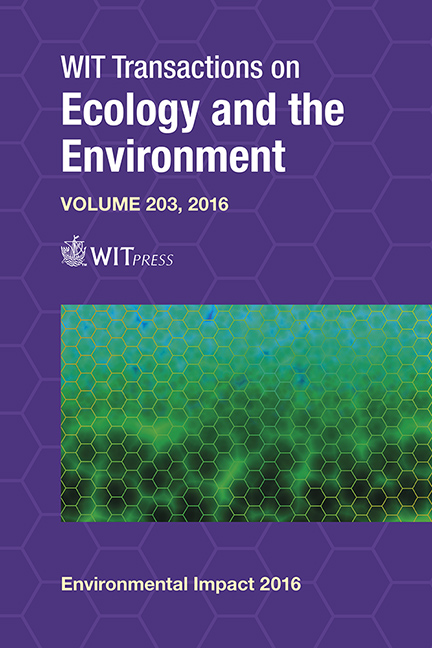Incorporating Landscape Connectivity And Uncertainty Into Ecosystem Restoration Scaling Of Environmental Damage
Price
Free (open access)
Transaction
Volume
203
Pages
12
Page Range
209 - 220
Published
2016
Size
773 kb
Paper DOI
10.2495/EID160191
Copyright
WIT Press
Author(s)
D. A. Hanson, A. W. Wolfson, M. C. Buckley, D. R. Reimer
Abstract
The dramatic loss of wildlife habitat and ecosystem functions has been well documented, and much of the remaining habitat and services are highly stressed and/or fragmented. Valued biological and natural systems are threatened by rapid, non-stationary changes in environmental conditions associated with climate change, high severity wildfires, and other major perturbations. In response to these threats, resource management plans and climate adaptation strategies commonly call for the need to restore landscape connectivity in order to increase the resistance and resilience of natural systems. Although preservation and restoration of connectivity is well accepted as a desired management objective, few of the existing resource management tools explicitly or effectively address this need, especially when determining mitigation and compensatory restoration requirements to offset loss of ecosystem services due to releases of hazardous substances, human-caused high severity wildfires, and infrastructure development projects. When resources are valued and managed by enhancing the total amount of a desirable habitat or ecosystem function without metrics available to determine the effects of landscape connectivity, the restoration benefits cannot be reliably and defensibly estimated. This presentation explores the importance of incorporating the geospatial and temporal dynamics associated with landscape connectivity and non-stationarity in establishing compensatory restoration requirements at complex environmental settings. Furthermore, we present the conceptual framework for integrating connectivity and uncertainty into restoration scaling of lost environmental services.
Keywords
habitat connectivity, non-stationarity, natural resources damage assessment, NRDA, habitat equivalency analysis, HEA, ecological restoration, geospatial modelling, non-stationarity, climate change, restoration scaling





